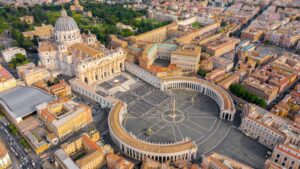The mesmerizing Marshall Islands in the Pacific Ocean are known for their rich cultural and linguistic legacy. This distinctive culture provides a captivating look into a way of life that has developed over many generations while resonating peacefully with the environment. It is firmly rooted in customs, oral history, and shared values. The Marshallese language, which is essential to maintaining and disseminating the Marshallese people’s identity, traditions, and stories, lies at the heart of this legacy.
In addition to being a sign of respect for the indigenous way of life, learning and using this language can lead to more in-depth and significant cultural research. Accurate and culturally sensitive translations are essential for visitors, scholars, and organizations hoping to establish a connection with the Marshall Islands. Marshallese translation services are essential in this scenario. These services serve to bridge the gap between languages and create effective connections by facilitating smooth communication and encouraging cultural immersion.
Traditional Practices: A Way of Life
The surrounding ocean, which has served as a source of food and a focal point of cultural customs, is closely associated with the Marshall Islands’ traditional way of life. Navigation and fishing are not just abilities; they are cherished customs that have been handed down through the ages. Stick charts, a clever navigational aid fashioned from palm ribs and shells, are a well-known invention of the Marshallese. These maps represent island locations, wave patterns, and ocean currents, helping the Marshallese people to know about their natural environment.
Customary land management is another long-standing practice that reflects the Marshallese social system. Families inherit the land and are in charge of caring for it, which promotes sustainability and a close bond between humans and their surroundings.
Unique Crafts: Weaving Culture Together
The Marshallese are skilled in making handicrafts out of coconut fibers and pandanus leaves, including fans, baskets, and woven mats. These objects are presented as gifts on different occasions. They are not only useful but also have symbolic meaning.
Another example of Marshallese innovation is the art of canoe making. The Marshallese can travel great distances over the Pacific with the help of canoes, or wa, which are precisely crafted for speed and efficiency. These canoes are a combination of engineering expertise and artistic expression.
Storytelling: The Voice of the Islands
A key component of Marshallese culture is storytelling. It is used to pass down lessons, values, and history to future generations. In order to give listeners a feeling of identification and community, elders are essential in narrating creation myths, moral parables, and stories about famous heroes.
Resilience and adaptation are common themes in these tales, depicting the Marshallese people’s capacity to prosper in the face of environmental hardships like resource scarcity and sea level rise.
The Role of the Marshallese Language
Preserving the Marshallese language is essential to preserving the islands’ cultural heritage. The Marshallese people’s collective knowledge and identity are embodied in the language, which serves as the main medium for traditional crafts, storytelling, and customs. To ensure its survival, efforts must be made to document and promote the language through literature, education, and internet channels.
This language serves as a cultural identity, allowing the islanders to negotiate modern issues while maintaining a connection to their ancestors in a world where smaller languages are becoming more and more endangered. Efforts to document and promote the language through literature, education, and online platforms are crucial for its survival.
Preserving Identity
Translation services are crucial to preserving the Marshallese people’s cultural legacy in the Marshall Islands. Translators make sure that Marshallese stories, rituals, and traditions are appropriately conveyed to audiences around the world. The Marshallese can interact with international organizations that promote discussion on topics vital to their national survival, such as climate change, ocean protection, and sustainable development.
Supporting Diversity in the Pacific
In the larger Pacific region, where linguistic diversity flourishes, translation services are just as important as they are in the Marshall Islands. For example, expert Filipino translation services serve more than 180 languages used in the Philippines, promoting communication in government, business, and education. These services guarantee that the subtleties of Filipino culture are recognized and appreciated globally in addition to bringing the Philippines to the international scene.
A Global Cultural Connector
Professional translation services serve as cultural bridges, whether they are used to promote indigenous languages in the Marshall Islands or to translate into Filipino to facilitate regional trade. By celebrating linguistic diversity, fostering cross-border contacts, and advancing mutual understanding, they make sure that cultures are not only preserved but also shared for future generations.
Conclusion
The Marshall Islands provide proof of the enduring influence of language and culture. From weaving to storytelling, the Marshallese people exhibit extraordinary resilience and a strong bond with their surroundings by embracing their traditions. The center of this dynamic culture is the Marshallese language. To ensure that the Marshallese language is passed down to future generations, we must back efforts to preserve and revitalize it. This includes funding language learning initiatives, recording oral histories, and encouraging Marshallese usage in a variety of contexts.






